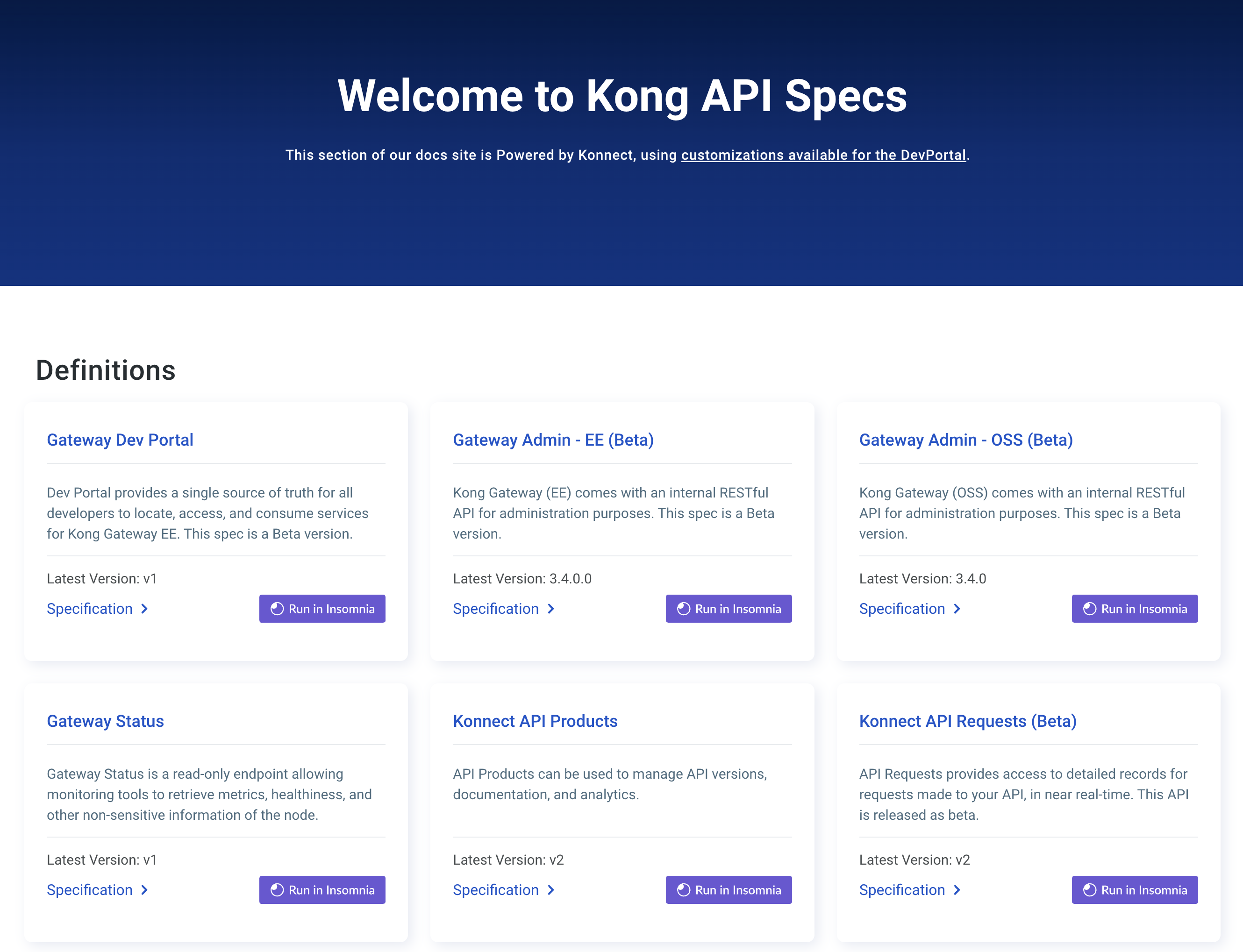このページは、まだ日本語ではご利用いただけません。翻訳中です。
End-to-End Identity Integration
Create a custom team
Custom teams serve as a primary way for organizations to provision access of users to different entities in the organization. Custom teams are used to mirror the organizational structure in an organization, any user who is a member of a custom team will inherit all of the roles of this team.
You must authenticate with the API, for information about authentication read the API authentication instructions.
Create a custom team by sending a POST request containing the name and description of your team in the response body:
curl --request POST \
--url https://global.api.konghq.com/v3/teams \
--header 'Content-Type: application/json' \
--data '{
"name": "IDM - Developers",
"description": "The Identity Management (IDM) team."}'
You will receive a 201 response code, and a response body containing information about your team:
{
"id": "a1d5c35a-3c71-4d95-ae4b-438fa9bd1059",
"name": "IDM - Developers",
"description": "The Identity Management (IDM) team.",
"system_team": false,
"created_at": "2022-10-25T16:39:27Z",
"updated_at": "2022-10-25T16:39:27Z"
}
Save the id value, so that you can reference this team throughout the guide.
Assign a role to a custom team
You must assign roles to a custom team to use the team. Roles define a set of permissions or actions that a user is allowed to perform on a Konnect entity. All custom teams start with no roles and each role must be added to the team for members of the team to inherit the roles.
-
Obtain a list of available roles by issuing a
GETrequest:curl --request GET \ --url https://global.api.konghq.com/v3/rolesThe response body will contain a list of available roles:
{ "control_planes": { "name": "Control Planes", "roles": { "admin": { "name": "Admin", "description": "This role grants full write access to all entities within a control plane." }, "certificate_admin": { "name": "Certificate Admin", "description": "This role grants full write access to administer certificates." }, ... } } } -
Assign a role to a team by issuing a
POSTrequest:The request must contain a
TEAM_IDparameter in the URL. This request requires a JSON body that containsrole_name,entity_id,entity_type_name, andentity_region.curl --request POST \ --url https://global.api.konghq.com/v3/teams/{teamId}/assigned-roles \ --header 'Content-Type: application/json' \ --data '{ "role_name": "Admin", "entity_id": "e67490ce-44dc-4cbd-b65e-b52c746fc26a", "entity_type_name": "Control Planes", "entity_region": "eu" }'If the information in the request was correct, the response will return a
200and theidof the new assigned role.entity_idcan be found in the Konnect in the Data Plane Nodes section.
Assign a user to a custom team
For a user to access the roles assigned to a custom team, the user must become a member of the team. A user may be a part of multiple teams and will inherit all of the roles from the teams they belong to.
-
Obtain a list of users by issuing a
GETrequest:curl --request GET \ --url https://global.api.konghq.com/v2/usersThe response body will contain a list of users:
```json { “meta”: { “page”: { “number”: 1, “size”: 10, “total”: 22 } }, “data”: [ { “id”: “69c60945-d42a-4757-a0b2-c18500493949”, “email”: “user.email@konghq.com”, “full_name”: “user”, “preferred_name”: “User2”, “active”: true, “created_at”: “2022-10-12T16:22:53Z”, “updated_at”: “2022-10-19T15:18:11Z” } … ] }
-
Using the
idfield from the desired user and theidfield from the team construct and issue aPOSTrequest:curl --request POST \ --url https://global.api.konghq.com/v3/teams/{teamId}/users \ --header 'Content-Type: application/json' \ --data '{ "id": "USER_ID" }'
You will receive a 201 with no response body confirming that the user was added to the custom team.
Mapping IdP groups to teams
If single sign on is enabled, an organization can optionally enable groups to team mappings. This mapping allows Konnect to automatically map a user to a team according to the group claims provided by the IdP upon login.
Update the team mappings by issuing a PUT request containing team_ids in the request body:
curl --request PUT \
--url https://global.api.konghq.com/v2/identity-provider/team-mappings \
--header 'Content-Type: application/json' \
--data '{
"mappings": [
{
"group": "team-idm",
"team_ids": [
"af91db4c-6e51-403e-a2bf-33d27ae50c0a",
"bc46c7ca-f300-41fe-a9b6-5dbc1257208e"
]
}]}'
If you were successful, you will receive a 200 response code, and the response body will contain a data object reflecting the new mappings:
"data": [
{
"group": "Service Developers",
"team_ids": [
"af91db4c-6e51-403e-a2bf-33d27ae50c0a",
"bc46c7ca-f300-41fe-a9b6-5dbc1257208e"
]
}
]












